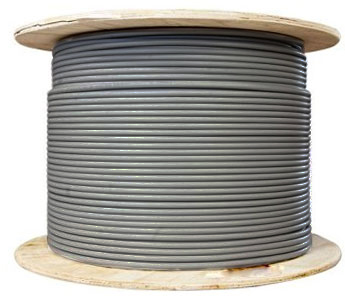
AWG wire, short for American Wire Gauge, is a standardized system used to measure and describe the diameter of electrical conductors. This system plays a critical role in ensuring compatibility and safety across a variety of electrical and industrial applications. AWG wire is widely used in residential, commercial, and industrial wiring, including power distribution, telecommunications, and electronics.
What is AWG Wire?
Applications
AWG wire is commonly used for:
- Power Transmission: Conducting electricity in buildings, appliances, and machinery.
- Electronics: Wiring components in small devices such as circuits and motherboards.
- Automotive and Marine: Providing electrical connections in vehicles and boats.
- Renewable Energy: Wiring solar panels and wind turbines to power systems.
Properties
- Gauge Number: AWG wire gauge determines the diameter of the conductor and, consequently, its electrical resistance and current-carrying capacity. Lower gauge numbers indicate thicker wires, while higher numbers indicate thinner wires.
- Conductive Material: Typically made from copper or aluminum, which offer high conductivity and flexibility.
- Insulation: AWG wire often comes with protective insulation to prevent short circuits and ensure safety.
Nomenclature for AWG Wire
The nomenclature for AWG wire provides detailed information about the wire’s size, material, and characteristics. Understanding these designations is essential for selecting the correct wire for your project.
Gauge Number
The AWG number indicates the diameter of the wire. For example:
- 10 AWG: A relatively thick wire often used in household circuits or industrial machinery.
- 22 AWG: A thinner wire suitable for low-power applications like electronics.
Material Designation
AWG wire labels may also include the conductor material:
- CU: Copper wire, the most common and efficient conductor.
- AL: Aluminum wire, which is lighter and cost-effective but less conductive than copper.
- Tinned Copper: Copper coated with a thin layer of tin to resist corrosion.
Insulation and Coating
Insulation types are often noted in the nomenclature, describing the wire’s protective layer:
- THHN: Thermoplastic High Heat-Resistant Nylon-coated wire, commonly used in building wiring.
- XHHW: Cross-Linked Polyethylene High Heat-Resistant Wire, ideal for outdoor or wet environments.
- MTW: Machine Tool Wire, used in industrial machinery for its flexibility.
Strand Count
Stranded wires (as opposed to solid wires) are often labeled with the number of strands and the diameter of each strand. For example:
- 7/30: Indicates seven strands, each with a diameter of 30 AWG, providing flexibility compared to a solid wire of the same gauge.
Voltage Rating
Many wires also include a voltage rating (e.g., 600V), specifying the maximum voltage the wire can safely carry.
Examples of AWG Wire Nomenclature
- 10 AWG THHN: A copper wire with thermoplastic insulation and a nylon coating, suitable for indoor power distribution.
- 14 AWG XHHW-2: A wire with cross-linked polyethylene insulation, resistant to heat and water, commonly used outdoors.
- 12 AWG MTW: A stranded copper wire designed for industrial applications requiring high flexibility.
Conclusion
AWG wire is a versatile and widely used system in electrical wiring, offering standardized measurements for conductor diameter and properties. Its nomenclature, including gauge number, material type, insulation, and voltage ratings, provides essential details to ensure compatibility and safety in applications ranging from household wiring to industrial equipment.
Understanding AWG wire nomenclature empowers electricians, engineers, and DIY enthusiasts to select the right wire for their projects, optimizing performance and safety. With the correct wire, you can ensure reliable and efficient electrical connections in any application.

